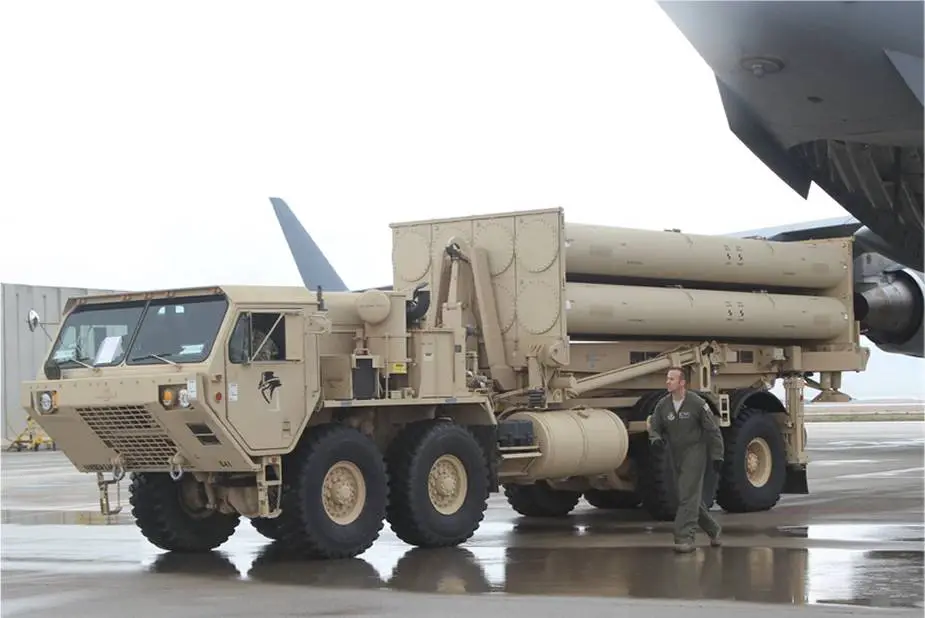According to the latest information published on the SIPRI (Stockholm International Peace Research Institute) arms trade database, the United States is set to deliver seven THAAD air defense missile systems and 360 THAAD missiles to Saudi Arabia, with delivery planned for the period between 2023 and 2027.
Follow Army Recognition on Google News at this link

A U.S. Air Force Airmen offloads a THAAD system from a C-17 Globe Master III at Nevatim Air Base, Israel, March 1, 2019. (Picture source U.S. DoD)
In October 2017, the U.S. State Department approved a foreign military sale to Saudi Arabia for THAAD and related support, equipment and services for an estimated cost of $15 billion. About a year later, in November 2018, the kingdom signed a letter of offer and acceptance with the United States for Lockheed’s THAAD. The THAAD is in service with the armed forces of the United States and the United Arab Emirates.
During the World Defense Show exhibition in Riyadh, which was held in March 2022, the Saudi General Authority for Military Industries, or GAMI, announced it approved two local projects for the THAAD air defense system: the first for manufacturing missile interceptor launchers, and the second for producing the missile interceptor canisters.
Terminal High Altitude Area Defense (THAAD) is an anti-ballistic missile defense system from the United States, which is designed to intercept and destroy short, medium, and intermediate-range ballistic missiles in their terminal phase, which is either their descent or reentry phase. This is accomplished through a hit-to-kill approach.
THAAD was developed by the U.S. Army, while the system itself is produced by the aerospace company Lockheed Martin. The key components of the THAAD system are its large X-band radar and its interceptors.
The radar is capable of detecting ballistic missiles, and it can track them over a considerable distance, which allows the system to effectively target the incoming threat. The interceptors are essentially missiles themselves, designed to launch from the ground to destroy the incoming missile in flight, thereby neutralizing the threat.
The THAAD system is designed to intercept targets at a range of up to 200 kilometers (about 125 miles). It is capable of reaching an altitude of up to 150 kilometers (about 93 miles) to destroy incoming missiles.
The AN/TPY-2 radar, which is part of the THAAD system, can detect ballistic missiles at a range of up to 1,000 kilometers (about 620 miles), depending on the size and speed of the incoming missile, as well as other factors.
Defense News June 2023














